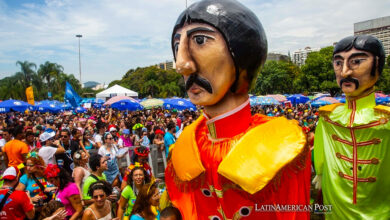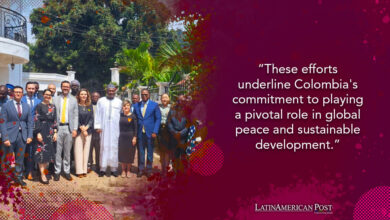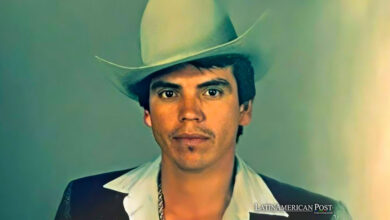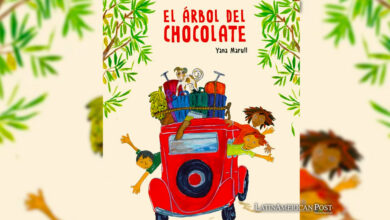Bolivar’s Sword: Symbol of Independence and Peace in Colombia
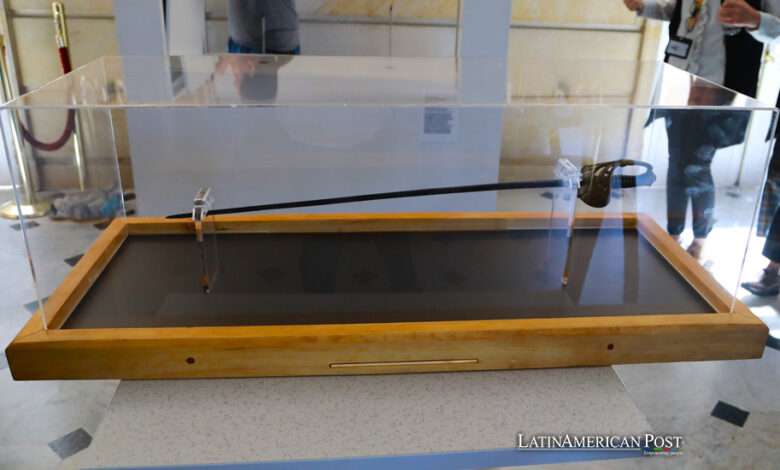
Simón Bolívar’s sword, a dual emblem of Colombia’s independence and peace, now sparks national dialogue on its historical significance, residing in either the National Museum or Casa de Nariño.
Bolívar’s Sword at the Center of the Controversy
On the landing at the entrance of the Casa de Nariño, headquarters of the Government, a display case and two guards guard one of the most precious assets in the country: the sword of the liberator Simón Bolívar, stolen 50 years ago by the M-19 guerrilla in one of the most high-profile chapters in Colombian history.
The auditorium of the National Museum of Colombia was the scene this Wednesday of a trip to the past: several hundred people decorated the place with flags of the urban guerrilla and the characteristic red, blue, and white colors of the M-19, accompanied by the faces of some of the most representative leaders of that group.
It will be precisely this museum that will house Bolívar’s sword for the next month so that all those Colombians interested can see this object up close in an “event of historical memory that seeks to redefine and rethink what happened 50 years ago,” explained the Minister of Culture, Juan David Correa.
“We want people to be able to look at this object with curiosity, to ask questions through it. Objects contain stories, are symbolic, and show us paths, and that is what we want to tell the country today, we have to visit history and talk about “Not necessarily to agree, but so that there is greater complexity in the national story,” Correa added.
The history of the sword
The theft of Bolívar’s sword was the first public act of the April 19 Movement (M-19) guerrilla, which stole it on January 17, 1974, from the Quinta de Bolívar, a house museum in the center of Bogotá where it was on display, where they left the proclamation: “Bolívar, your sword returns to the fight.”
The sword took a while to return to Colombia. It was not until the demobilization of the guerrilla in 1991 that this object returned to what had been his home, like Bolívar, after touring several Latin American countries.
His journey was not without anecdotes, such as when he was almost lost with the United States invasion of Panama in 1989.
In the 17 years in which the national symbol was in the hands of the M-19, myths arose: that it had been given to drug trafficker Pablo Escobar, who would have given it to his son, or that the guerrillas gave it to Fidel. Castro. It was also said that she was hidden in the house of the poet León de Greiff.
The sword is “such an important symbol, a call to bring things out of oblivion,” said the high commissioner for Peace, Otty Patiño, who was also a leader of the M-19 and was present at the event held this Wednesday, where he also He was accompanied by other members of the guerrilla such as Vera Grabe, current chief peace negotiator of the Government with the National Liberation Army (ELN).
Historical memory
When the sword was returned in 1992, then-president César Gaviria “kept it in a vault at the Bank of the Republic and no Colombian could see it,” Senator María José Pizarro, daughter of one of the founders of the M-19, explained to EFE, Carlos Pizarro.
The sword returned to the center of the discussion in the country when Gustavo Petro’s first order as president was to take it out to the Plaza de Bolívar during his inauguration, a request that had previously been denied by his predecessor. , Ivan Duque.
Since then, the sword has remained on the landing of the Casa de Nariño, where anyone who enters the palace can see it.
Read also: Discovering ancient wisdom at the Andean School of Spiritual Guides of Bolivia
The sword, according to Pizarro, has a double meaning, since it is not only a symbol of Bolívar, who gave independence to Colombia, but it is also an emblem of peace: “He returned with the last great attempt at national agreement that was Constitution of 1991”.
Whether in the National Museum or the Casa de Nariño, Simón Bolívar’s sword stands in Colombia as a symbol of freedom for all, although the official story remains divided between whether it was a theft or whether it was a recovery. Now all Colombians can be part of this conversation.

